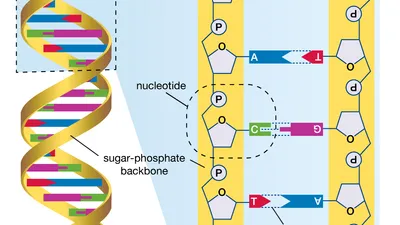India Completes First Phase of Genome Mapping
Genome India Project Unlocks Insights into Health, Ancestry, and Diversity
Context: India has successfully completed the first phase of its ambitious Genome India Project (GIP), creating a rich genetic database that is now ready for use.
More on News
- The project, which has sequenced the entire genomes of 10,000 individuals from 83 diverse population groups, promises to revolutionise healthcare and shed light on the country’s genetic and evolutionary history.
- Led by over 100 scientists across 20 Indian academic and research institutions, the GIP is India’s largest and most comprehensive effort to catalog its population’s genetic makeup.
- The initial findings have been published in Nature Genetics, with further analysis and expanded results expected next year.

Human Genome Project (HGP): Launched in 1990 and completed in 2003, this international effort aimed to sequence the entire human genome. It involved researchers from the U.S., U.K., Japan, France, Germany, and China, costing $2.7 billion. The HGP mapped ~92% of the human genome by 2003, with refinements completed by 2022.
Genome India Project (GIP): Initiated in 2020 by India’s Department of Biotechnology, GIP focuses on sequencing 10,000 Indian genomes to create a population-specific genetic reference. By 2024, it successfully sequenced 10,000 genomes from 99 ethnic groups, stored as an 8-petabyte dataset at the Indian Biological Data Centre.
Gateway to Personalised Medicine and Targeted Treatments
- Healthcare: The database generated through GIP is poised to enable breakthroughs in healthcare by paving the way for personalised medicine and more accurate, faster diagnostics.
- By understanding the unique genetic variations that exist across India’s population, scientists and healthcare providers can tailor treatments to individual genetic profiles rather than rely on general prescriptions.
- Three Billion Nucleotide: The full genome of an individual consists of approximately three billion nucleotide molecules — adenine (A), thymine (T), cytosine (C), and guanine (G) — arranged in a specific sequence.
- While 99.9% of this sequence is identical across all humans, it is the 0.1% variation — about 3 to 4 million nucleotides — that makes each person unique in physical traits, behaviour, and health predispositions.
- Revealing Adaptations: These variations can also reveal how different communities have genetically adapted to their environments over centuries.
- Most differences are harmless, but a small percentage—about 1–2%—can significantly affect a person’s traits or susceptibility to diseases, which makes them especially important for medical research.
Building the GIP Database
- Blood Samples: The genome sequences in the GIP were created using blood samples, specifically focusing on the “germline” DNA — the genetic information inherited from one’s parents.
- This type of DNA, collected from white blood cells, helps preserve the original genetic code and is less likely to be altered during cell division.
- Knowing Health Conditions: Understanding an individual’s germline sequence can indicate their risk of developing specific health conditions or explain why certain treatments might be ineffective.
- This data can lead to more personalised, effective therapies.
- Additionally, if patterns in the consequential genetic segments are shared across a population group, it may reveal a collective predisposition to diseases, such as diabetes, which is highly prevalent in India.
- Specific Drugs: Such findings can lead to the development of population-specific drugs and more targeted health interventions, especially for rare genetic disorders found primarily among Indian communities.
Tracing Ancestry and Evolution Through DNA
- Evolutionary History: Beyond healthcare, the GIP also holds immense potential for unravelling the evolutionary history of India’s population groups.
- Since germline DNA reflects inherited genetic traits, it can be used to trace ancestry, track migration patterns, and study how communities intermingled or adapted to different climates and geographies.
- Identity and Origins: By comparing genetic data across generations and across ethnic, linguistic, and geographical groups, scientists can piece together how populations moved, mixed, and evolved — offering insight into the deeper question of human identity and origins.
India’s Answer to the Human Genome Project
- The Genome India Project is India’s counterpart to the global Human Genome Project, which began over two decades ago.
- However, the original global initiative lacked sufficient representation from Indian populations.
- Given India’s vast and diverse genetic landscape, a dedicated project like GIP was necessary.
With plans to include more samples and expand the database, the GIP aims to become a comprehensive gene bank reflecting the full diversity of India’s population. The project stands to transform public health, medicine, and our understanding of who we are as a people.


